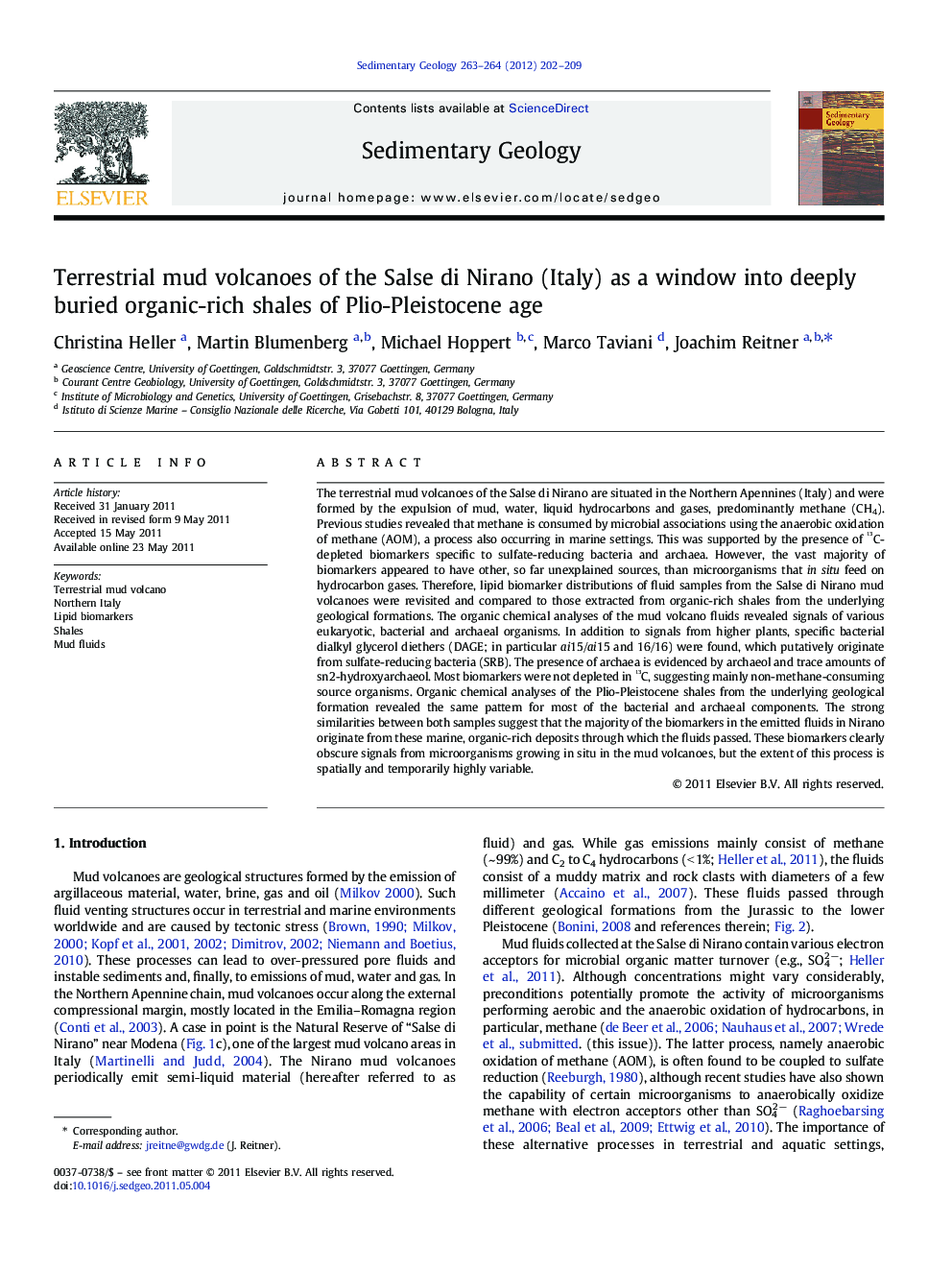| کد مقاله | کد نشریه | سال انتشار | مقاله انگلیسی | نسخه تمام متن |
|---|---|---|---|---|
| 4689788 | 1636090 | 2012 | 8 صفحه PDF | دانلود رایگان |

The terrestrial mud volcanoes of the Salse di Nirano are situated in the Northern Apennines (Italy) and were formed by the expulsion of mud, water, liquid hydrocarbons and gases, predominantly methane (CH4). Previous studies revealed that methane is consumed by microbial associations using the anaerobic oxidation of methane (AOM), a process also occurring in marine settings. This was supported by the presence of 13C-depleted biomarkers specific to sulfate-reducing bacteria and archaea. However, the vast majority of biomarkers appeared to have other, so far unexplained sources, than microorganisms that in situ feed on hydrocarbon gases. Therefore, lipid biomarker distributions of fluid samples from the Salse di Nirano mud volcanoes were revisited and compared to those extracted from organic-rich shales from the underlying geological formations. The organic chemical analyses of the mud volcano fluids revealed signals of various eukaryotic, bacterial and archaeal organisms. In addition to signals from higher plants, specific bacterial dialkyl glycerol diethers (DAGE; in particular ai15/ai15 and 16/16) were found, which putatively originate from sulfate-reducing bacteria (SRB). The presence of archaea is evidenced by archaeol and trace amounts of sn2-hydroxyarchaeol. Most biomarkers were not depleted in 13C, suggesting mainly non-methane-consuming source organisms. Organic chemical analyses of the Plio-Pleistocene shales from the underlying geological formation revealed the same pattern for most of the bacterial and archaeal components. The strong similarities between both samples suggest that the majority of the biomarkers in the emitted fluids in Nirano originate from these marine, organic-rich deposits through which the fluids passed. These biomarkers clearly obscure signals from microorganisms growing in situ in the mud volcanoes, but the extent of this process is spatially and temporarily highly variable.
Journal: Sedimentary Geology - Volumes 263–264, 1 July 2012, Pages 202–209